- Training
- Certification
Instructor-Led Live Training
This two day, in-person training will quickly get you up-to-speed on the STK basics and introduce you to some of STK's advanced capabilities.
As an added bonus you'll leave with all the necessary training to complete STK Certification!
On-Demand Training
Familiarize yourself with the STK workflow and learn how to model your own systems and missions in STK.
Learn how to use STK’s more advanced analysis tools to quantify and measure mission effectiveness.
Learn how to use the most robust features of STK.
Learn how to use a variety of STK modules and features to solve specific problems.
There will be a total Solar Eclipse over North America on April 8, 2024 that will cut across much of the U.S. The next total solar eclipse that can be seen from the contiguous United States won’t be until 2044. This class will use STK and the Coverage capability to model and analyze the path of the eclipse. We will examine various locations with lighting constraints to quantify the coverage and determine when locations will experience a total or partial eclipse.
This training series consists of 5 brand new, one-hour lessons. Each one will focus on integrating specific STK capabilities with another Ansys tool. Through this series, you will learn about each capability and how it completes the solution for enabling a digital thread. However, each of these classes is standalone. You can attend all of them or only those of interest to you.
- Part 1: STK & Thermal Desktop Integration
- Part 2: Ansys Zemax & STK for EOIR Imaging
- Part 3: Multidomain Mission Design with Ansys HFSS & STK
- Part 4: Adding fidelity to 3D Models in STK using Ansys Discovery & SpaceClaim
- Part 5: Ansys Fluent and STK Integration
This training class will introduce you to the brand new Surface Vehicle Object in Orbit Determination Toolkit (ODTK). You will learn how to use the Surface Vehicle Object and apply it to understand the navigation of a sample lunar rover. We will build a navigation system using the Deep Space Network (DSN), a sample constellation of lunar navigation satellites, and a sample lunar rover trajectory. In a short amount of time you will perform incredibly powerful analysis that allows you to predict the level of accuracy you can achieve with your operational navigation systems.
This training class will walk you through the design of an aircraft mission using STK and Test and Evaluation Tool Kit (TETK) while assessing the communication link to a known ground station. You will first create a simple aircraft route using STK’s 3D edit capability and explore the line of sight condition between the aircraft and the ground station. Mission complexity will then be added by adding in a field of view sensor and a transmitter/receiver pair. Various tweaks to the aircraft route and transmitter and receiver properties will need to be made in order to satisfy mission constraint conditions such as line of sight and link budget signal to noise ratio. You will also leverage capabilities provided by TETK's Flight Analysis Tool (FAT) to more quickly assess predictive data and inform needed changes to the planned route.
Upon completion of this training, you will learn how to:
- Add basic objects to an STK scenario and edit their properties
- Assess whether mission objectives will be met using predictive modeling
- Leverage STK’s 3D edit capability to quickly develop/modify an aircraft route
- Use the Access tool to compute line of sight and link budgets for communication devices
- Utilize features of TETK’s Flight Analysis Tool (FAT) to better visualize and analyze data
STK's Communications capability, together with the Chain and Constellation objects, makes it easy to model analog and digital transponders with interference. In this lesson, you will use Communications to insert interference into a one‐hop, transcontinental communications link from one ground site to another via a transponder mounted on a geostationary (GEO) satellite. You will learn how to interfere with both an Analog Transponder and a Digital Transponder.
This training class will walk you through modeling an ion engine (electric propulsion system) using the Astrogator capability in STK. You will learn how to set up autosequences and use the Astrogator scripting tool to simulate prolonged thrust duration to execute a continuous burn until the orbit is circularized. Once circularized, we will look at some reports and graphs to evaluate delta V and fuel usage to better understand the efficiency of electric thrusters.
Upon completion of this training, you will understand how to:
- Create a new set of custom axes using Analysis Workbench
- Define the properties of an electric thruster in the Components browser
- Set the power source and properties of the thruster itself
- Use the scripting tool to compute mean eccentric anomaly and set custom thrust directions
- Create a new stopping condition
Learn how to use the satellite collection object as a fast, easy way to set up and analyze a group of satellites as a single object. The satellite collection object supports metadata for additional descriptive information and also supports categorization into subsets for easier analyses.
Upon completion of this training, you will understand:
- The Satellite Collection object
- Custom orbit definition files
- Reference objects
- The Deck Access Tool
- Routing files
This training class will walk you through creating a scalable vector graphics (SVG) display for use in STK. SVGs are XML-based vector image files that are now compatible for use in STK as an addition to the existing data displays within Test & Evaluation Tool Kit (TETK). SVG displays allow you to design and build custom data displays, widgets, and dashboards for your 3D Graphics window within STK. They also enable you to drive the size, orientation, position, color, and text of your SVG components with STK-derived or external generated data by using custom keyword XML-tags.
Upon completion of this training, you will understand how to:
- Utilize an SVG display through TETK's Flight Analysis Tool
- Drive SVG displays by STK-derived data providers and external data
- Determine an acceptable resolution for your SVG display
- Utilize a vector graphics editor to help visualize, design, and modify SVGs
- Create an SVG data display
This class introduces you to the basic functionality in STK. It focuses on the skills required to take and pass the Level 1 STK Certification test. This class condenses the Level 1 Beginner tutorials found in the STK Help into a single, 90-minute lesson. You will learn how to:
- Use the Great Arc propagator
- Create Place objects
- Create custom reports and quick reports
- Use Connect
- Make a movie
We will also provide you with tips and tricks to help guide you through the certification. You will find this training useful if you want to start the L1 certification or are currently working on it and need some help to complete it.
Detecting and responding to wildfires quickly is essential to prevent disaster. In this training we will show you how to connect STK with Excel and Cameo using ModelCenter to demonstrate rapid image collection and information sharing for fighting wildfires.
This mission was put together to show the end-to-end detection, collection, and communication of wildfire locations across northern America. It was selected because it contains elements of satellite constellation design, sensor modeling and communications analysis in the context of the MBSE requirements definition phase.
This class will demonstrate using a cohesive digital ecosystem with the following tools.
- STK 12.0 install
- STK Analyzer 12.0 install
- ModelCenter 14.0
- ModelCenter MBSE 2.1
- Cameo Systems Modeler 19.0
- Ansys Mechanical 2019R2
Note that licenses and installs are not provided for third-party tools. However, if you are interested in completing this training using our DE Cloud then please reach out to trainingteam@agi.com.
Every year AGI assists NORAD in tracking Santa as he delivers presents across the globe. This class will teach you how to figure out when you can see Santa from your front porch using a predicted flight path in STK. Astronomers and Engineers across the globe have detected Santa in the past, so we have an idea of where he will be and when. From that information we've created an approximate flight path, so we know when and where to expect him. Keep in mind though, Santa’s actual flight may change on Christmas Eve due to weather, or Rudolph’s mood! Upon completion of this class you will understand how to:
- Create a place object using your address to model your house
- Load an external ephemeris file to design a route
- Change a model file
- Compute line of sight between two objects to determine when and where you can view something
Access recordings from the first DE Forum training class which covers the Fundamentals of STK. This introductory class quickly teaches you how to create a Design Reference Mission. You will learn:
- Introductory class to quickly learn how to create a Design Reference Mission with STK
- Create analytical models of aerospace and defense systems
- Analyze mission simulations
- Explore the STK Object Model for integration and automation
- Generate STK outputs and make movies
Access recordings and supporting materials for the second DE Forum training class which covers Integrating with STK. You will learn:
- How to integrate STK with other software tools, mainly using Python through Jupyter Notebooks
- About the STK APIs
- How to create and run code to set up your STK scenario and extract data for analysis
Access recordings and supporting materials for the third DE Forum training class, "Building a digital prototype of a satellite with STK SOLIS". You will:
- Explore using STK for e-satellite design
- Evaluate mission requirements and translate them into spacecraft design requirements
- Create a digital prototype of a satellite and explore its capabilities in the preliminary design phase
Access recordings and supporting materials for the fourth DE Forum training class "Modeling a multi-domain hypersonic mission". You will learn how to:
- Model a multi-domain hypersonic mission using a digital mission engineering ecosystem of tools including STK, ModelCenter, Ansys, and others
- Connect the mission environment to the digital thread by recreating a hypersonic test flight
- Evaluate the response time of the system of systems for detecting and tracking a hypersonic vehicle
Access recordings that teach you how engineers and operators require a quick way to design a satellite mission while considering multiple aspects of the mission. In this lesson, you will design a space-based, weather observing mission. You will build up the various components of the mission and review the considerations mission planners must make during mission design as things change throughout the life cycle. Specifically, you will learn how to use STK to:
- Model a satellite
- Calculate solar power generation
- Create communication links
- Calculate link budgets
- Design a LEO constellation
Access recordings that teach you how to model GPS reception between GPS satellite transmitters and an aircraft GPS receiver. You will set up a training mission with a light aircraft flying a search pattern over mountainous terrain and determine how well the aircraft receives the GPS transmissions. We will also evaluate how hand-held GPS jammers affect the aircraft's reception of the GPS signal along its flight path - at a specific altitude over a wide area and in a 3D volume of space. This lesson will teach you how to:
- Use a local terrain file for analysis and situational awareness
- Use a rain model and atmospheric absorption model and see effect on RF in scenario
- Design a GPS receiver and use an antenna pattern
- Create a CommSystem object to determine interference and signal jamming
- Use a link budget to determine why GPS signal reception is usable or not and how rain, atmospheric, and system noise temperatures affect your analysis
- Use Coverage and Volumetrics to determine jammer's effectiveness
Access recordings that teach you how to use some of STK's most popular modules while learning everything you need to complete the Level 2 STK Master Certification. Unlike the fast-paced "L2 STK Comprehensive Crash Course" that we commonly offer, this series slows things down so that each lesson teaches directly to one of the four certification exercises.
Access the materials needed for the Level 1 - ODTK Certification test, as well as the ODTK - Level 1 Virtual Training Series recordings.
Access the recording of the L3 virtual training class. Resources include the step by step instruction guide and starter scenario used in the class.
The resources include recordings for each training lesson taught in the training session.
This virtual training series follows three (3) important design aspects of designing, developing, implementing, and launching a 1U CubeSat to image and characterize active volcanoes in the United States:
- Orbit Design
- Solar and Power Design
- Communications Design
Access the recording of the L3 virtual training class. Resources include the step by step instruction guide used in the class.
Access recordings for each training lesson taught in this virtual training series.

AGI Custom Training
AGI offers in-person and virtual custom training with our "Quick Start" program.

Ansys Training
Looking for training on Ansys products? Visit the Ansys Learning Hub.
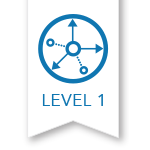 Level 1: STK Certification
Prerequisites: None
Level 1: STK Certification
Prerequisites: None
Level 1 STK Certification covers the skills that are fundamental to the free version of STK. This test will require you to demonstrate proficiency with the basic features of STK, such as building basic scenarios, generating reports, and recording videos.
To prepare for the test, AGI recommends that you complete the Level 1 Beginner tutorials. These lessons will take about four hours to complete. After you register for the test, you will have 14 days to complete and submit it.
If you pass, you will receive a personalized Level 1 STK Certification certificate, an Ansys lanyard and a custom L1 STK certification pin.
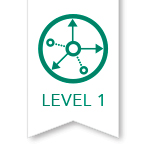 Level 1: TETK Certification
Prerequisites: Level 1 STK Certification
Level 1: TETK Certification
Prerequisites: Level 1 STK Certification
Level 1 TETK Certification covers the skills that are fundamental to using TETK. This test requires you to demonstrate proficiency with basic TETK features, such as importing external data, managing what data is important for a particular T&E assessment, and generating contours, graphs, and other TETK artifacts.
To prepare for the test AGI requires that you complete Level 1 STK Certification and recommends you complete the TETK Guided Training tutorial. After you register, you will have 14 days to complete and submit the test.
If you pass, you will receive a personalized Level 1 TETK Certification certificate and a custom L1 TETK certification pin.
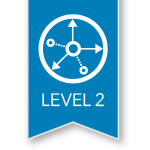 Level 2: STK Master Certification
Prerequisites: Level 1 STK Certification
Level 2: STK Master Certification
Prerequisites: Level 1 STK Certification
Level 2 STK Master Certification covers the advanced skills needed to productively use STK’s core add-on modules. This advanced certification level covers STK Professional, Analysis Workbench, Coverage, Communications, Radar, Aviator, and Astrogator.
To prepare, AGI recommends that you complete the Level 2 Advanced tutorials, which take up to eight hours to complete. After you register, you have 14 days to complete and submit the test.
If you pass, you will receive a personalized STK Master Certification certificate, and a custom L2 STK Master certification pin. You will also be eligible to register for the Level 3 Certification test.
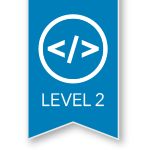 Level 2: STK Master Integration Certification
Prerequisites: Level 1 STK Certification
Level 2: STK Master Integration Certification
Prerequisites: Level 1 STK Certification
Level 2 - STK Master Integration Certification covers integrating with and automating the Ansys Systems Tool Kit® (STK®) digital mission engineering software with Python or MATLAB. These seven exercises focus on using Python or MATLAB to build a STK scenario, extract data from the scenario, and analyze that data.
To prepare for this certification, AGI recommends that you complete the Level 2 - Advanced tutorials related to integration. You can also refresh your programming skills with tutorials from the Python or MATLAB websites. After you register, you will have 14 days to complete the test.
For more information about what is on the test, and to see what prize you will earn after passing the test, see the Become Level 2 - STK Master Integration Certified page.
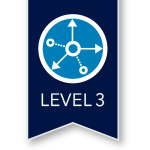 Level 3: STK Grand Master Certification
Prerequisites: STK Level 2 Certification
Level 3: STK Grand Master Certification
Prerequisites: STK Level 2 Certification
For each individual track you complete and pass, you will receive a custom track specific L3 certification pin.
To become Level 3 Grand Master Certified, you must pass at least four of the tracks. You will then receive a personalized STK Grand Master Certification certificate and an additional custom L3 STK Grand Master certification pin.
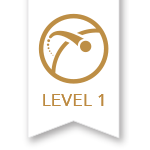 Level 1: ODTK Certification
Prerequisites: None
Level 1: ODTK Certification
Prerequisites: None
Level 1 ODTK Certification covers the skills that are fundamental to ODTK. This test will require you to demonstrate proficiency with the basic features of ODTK, such as building basic scenarios, generating reports, and recording videos.
To prepare for the test, AGI recommends that you complete the Level 1 Beginner tutorials. These lessons will take about four hours to complete. Once you register for the test, you will have 14 days to complete and submit it.
If you pass, you will receive a personalized ODTK Certification certificate, an Ansys lanyard and a custom Level 1 ODTK certification pin.

